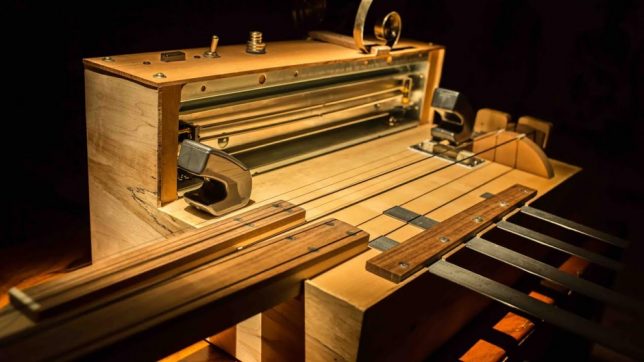 |
Negative conversion tool Negative Lab Pro has released a version 2.2 update it calls ‘the most rigorously developed update’ to date, bringing with it a ‘new engine, easier editing tools, and breathtaking color and tone reproduction’
For those unfamiliar with Negative Lab Pro, it’s a plug-in for Lightroom 6 and Lightroom Classic that adds a specific toolset and workflow for converting negative film scans. It rids the need for hand-editing curves and manually accounting for scan densities, making it easy to go from scan to final image in a matter of minutes through its own graphic interface within Lightroom. Below is a year-old introduction to how Negative Lab Pro works:
With that out of the way, let’s get on to the new features Negative Lab Pro 2.2 brings to the table.
First up, Negative Lab Pro 2.2 features an entirely rebuilt engine that ensures the entire workflow can be done with Raw file formats and is non-destructive. Now, rather than there being multiple layers of adjustments atop the image, all conversions and adjustments are made directly to the Raw negative scan (if you convert the scanned negative into a Raw file format upon import). In theory, this should mean there isn’t any loss of quality when multiple adjustments are made on top of one another.
 |
| A screen recording showing how the curves will intelligently adjust based on the adjustments made to scans. |
The new engine also features what its developer calls ‘Multilayer Auto-Generating Integrated Curves,’ which is a fancy way of saying the plug-in is able to intelligently adjust the curves to preserve the tonality and scans as adjustments are made. Negative Lab Pro developer Nate Johnson provides an explanation for how this new technology works:
‘The new engine has its own processing pipeline with 9 internal processing layers working together seamlessly under the hood. Internally, I can define, order and combine each layer in the way that makes the most sense for film processing. For instance, color balancing happens earliest in the pipeline, so your color balance remains stable even if you drastically adjust your tones. Negative Lab Pro then auto-generates up to 42 curve points in real time (14 integrated points for each color channel), which are then fed directly into Lightroom’s curve control.’
Put simply, this new development should result in ‘purer tones and colors’ in your negatives, even as adjustments are applied.
Another benefit of the redesigned engine is improved color stability. Now, adjustments made to the image — such as contrast, brightness and more — won’t affect the color balance of an image. Nate demonstrates in the comparison images below the difference between Negative Lab Pro version 2.1 and version 2.2 when making changes to contrast:
 |
 |
A collection of new tools have also been added to Negative Lab Pro 2.2, including film-specific color temperature and tint sliders, a new color picker, range control for highlights and shadows, and new tone profile families, which provide different baselines for getting started with editing your scans.
 |
| The integrated temp/tint sliders that use the new 2.2 engine. |
If you’re using Negative Lab Pro 2.2 with Lightroom Classic, the update also adds new LUT-based emulations. Unlike Adobe Lightroom 6, Lightroom Classic has integrated 3D Lookup Tables. This capabilities allows the new LUT-based emulations to make ‘incredibly nuanced adjustments to color and tone reproduction,’ which should result in more accurate film stock emulations.
 |
The best part is, in the case of most scans edited with previous versions of Negative Lab Pro should automatically be converted to the rebuilt engine in version 2.2. So, unless you want to make more precise edits with the new engine, you shouldn’t have to go back and manually re-edit all of your scans.
Negative Lab Pro version 2.2 is free for anyone who currently has a license. If you’re trying out Negative Lab Pro for the first time, you will be able to convert 12 images for free before you’re required to purchase a license.
Negative Lab Pro 2.2 is available to purchase for $ 99. The plug-in receives consistent updates and to date, all past updates have been free so long as you own a license. Nate does note, however, that at some point there may be paid updates or extras available for purchase.
You can find out more information about Negative Labs 2.2 in Nate’s incredibly comprehensive update post. on the Negative Lab Pro forums.
Articles: Digital Photography Review (dpreview.com)
























You must be logged in to post a comment.